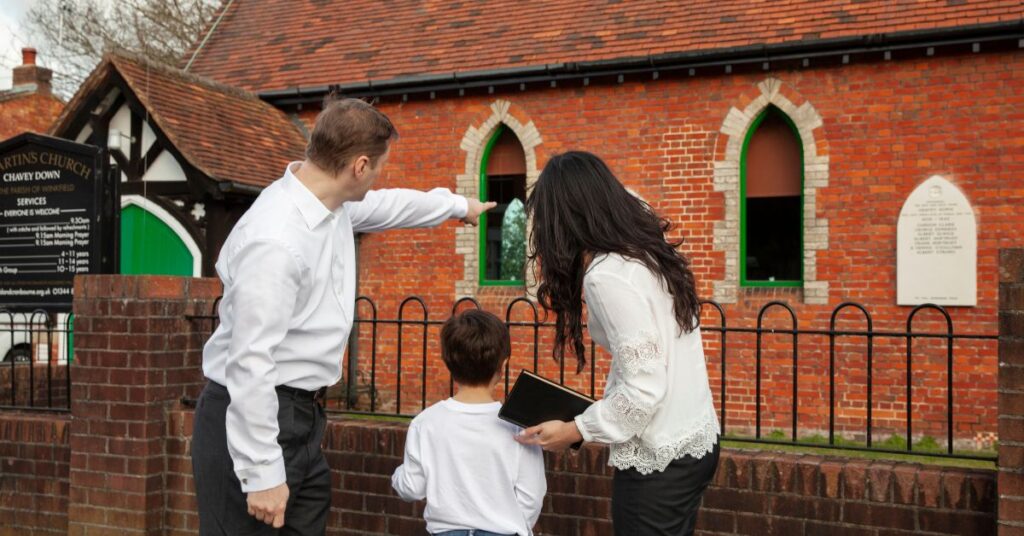Hook + question: What exactly is the doge hhs migrant housing contract, and why do people care? This guide will explain it in plain words. You will get answers, examples, and useful notes. I wrote it so anyone can follow along. I keep sentences short and simple. I also add tips from public sources and common practice. You will see how contracts work, who signs them, and what the rules mean for migrants and communities. If you write about policy, work in shelter services, or are just curious, this piece will help. The phrase doge hhs migrant housing contract appears naturally here so you can follow SEO best practices. Read on and learn the core ideas, common problems, and how oversight usually happens.
What is the doge hhs migrant housing contract?
A doge hhs migrant housing contract is a formal agreement for housing services. The Department of Health and Human Services often hires outside groups to run these shelters. The contract sets who does what. It lists services, payments, and rules. It names standards for food, sleeping areas, safety, and care. The contract also sets reporting rules. It usually spells out inspections and record keeping. People use the phrase doge hhs migrant housing contract to search for related news and documents. These contracts matter because they affect real people. Migrants depend on safe places to sleep and eat. Local communities also need clarity about how shelters operate. In plain terms, a contract is a promise written down and watched closely.
Who signs and enforces these contracts?
Contracts like doge hhs migrant housing contract are signed by the federal agency and a contractor. The federal side is often HHS or an office within it. The contractor may be a non-profit, private company, or faith group. Local governments sometimes appear as partners. The contract names who does inspections. It also names who pays invoices. Enforcement can include audits, site visits, and fines. In some cases, other agencies may step in to check health and safety. Community groups and the press also act as watchdogs. I learned from public reports that quick, clear communication helps prevent problems. A contract works only when both sides follow the rules and when people report issues early.
Typical services spelled out in the doge hhs migrant housing contract
A doge hhs migrant housing contract usually lists core services. These include safe shelter, meals, hygiene supplies, and medical screening. The contract often adds transportation and case management. It may require language support and mental health services. Staffing levels and staff training are often included. The contract then defines standards for privacy and housing layout. It sets cleaning schedules and waste handling rules. Contracts may set rules for visitors and security. They also include emergency plans. Clear service lists make it easier to check if the contractor does the job. When I review similar agreements, the more specific the list, the fewer surprises appear later.
How costs and payments work
Money terms in a doge hhs migrant housing contract are clear and detailed. The agreement sets payment per person or per bed. It may cover food costs, staff pay, and utilities. The contract notes when invoices are due and which documentation is needed. It also explains allowable expenses and what needs prior approval. Some contracts include performance bonuses or penalties. They may require return of funds if standards are not met. Payment rules aim to prevent waste and misuse. Auditors check receipts. For communities, clear cost rules help local budgets. For service providers, clear payments help plan staffing and supplies. Clarity here reduces conflict.
Standards, inspections, and compliance rules
Most doge hhs migrant housing contract documents include strict standards. These standards cover cleanliness, room density, and medical care. Contracts describe inspection schedules. Inspectors check food safety, fire exits, and medication storage. They also verify training and background checks for staff. If the contractor fails to meet standards, the contract may allow corrective plans or end the agreement. Some contracts require third-party audits. Others call for public reporting on outcomes. Compliance rules create a paper trail. That trail helps courts, advocates, and officials hold parties accountable. From my reading of public materials, transparent inspections lead to faster fixes.
Rights and protections for migrants under the contract
A doge hhs migrant housing contract often includes basic rights for residents. These rights can include safe housing, food, medical care, and access to legal information. Contracts can forbid abuse, discrimination, or forced labor. They may set rules for privacy and consent for medical care. Some contracts include child protection measures. They may require a clear complaint process for residents to report problems. These protections aim to preserve dignity. When the contract names rights, it gives advocates a tool to call out failures. I often advise groups to keep copies of these sections and track any violations carefully.
Common challenges and where things break down
Even with clear doge hhs migrant housing contract terms, problems happen. Communication gaps are common. Sometimes numbers of people rise faster than expected. That strains staff and supplies. Other issues include unclear responsibilities and delayed payments. Poor record keeping can hide problems. Some contractors cut corners on staffing to save money. Oversight may be uneven across locations. Political pressures can also complicate performance. In my experience reading reports, early warning signs like missed training or late invoices predict bigger issues. Addressing the small problems quickly helps avoid crises. Contracts that require regular reporting make it easier to spot trouble.
Transparency, public records, and FOIA
Transparency helps ensure the doge hhs migrant housing contract is followed. Many contracts become public through government websites. Others are released via Freedom of Information Act (FOIA) requests. Local media and watchdog groups often publish contract details. Public access allows community input and oversight. The contract should list reporting requirements and public metrics. Some contracts include public dashboards with occupancy and spending data. When such tools exist, the public can see how funds are used. From reviewing public releases, I find that clear, accessible documents reduce rumors and build trust. If you need contract copies, check the HHS site or file a FOIA request.
Role of local communities and partners
Local governments, non-profits, and volunteers play big roles under a doge hhs migrant housing contract. They may provide food, clothes, or legal help. Schools and health clinics can partner with shelters for care and services. Local agencies often help coordinate transport or mental health referrals. Community feedback can improve service delivery. Some contracts require community liaison roles. That role helps solve neighborhood concerns and maintain safety. When communities are included early, solutions are more practical. From local examples I have seen, partnership reduces friction and improves outcomes for migrants and neighbors.
How monitoring and audits protect taxpayers and residents
Monitoring and audits are core to any doge hhs migrant housing contract. Auditors check spending, staffing, and service quality. They verify that the contractor followed the contract. Audits can be routine or triggered by complaints. Results can lead to recovery of funds, corrective plans, or termination of the contract. Transparent audit results reassure taxpayers. They also protect residents by documenting standards and responses. Good contracts require timely audits and clear remedies. From public audit reports, I notice that timely follow-up on audit findings is crucial. Contracts that lack audit detail often leave gaps in oversight.
Best practices for drafting and negotiating these contracts
Good doge hhs migrant housing contract drafting is careful and specific. Start with clear service lists and performance metrics. Build in regular reporting and inspection rules. Include payment schedules tied to verifiable deliverables. Require staff background checks and training. Build flexible language for emergency increases in population. Add public reporting and complaint channels. Use plain language to avoid confusion. Define dispute resolution steps. Include clauses for audits and penalties. From reviewing effective contracts, I recommend adding short timelines for corrective actions. Clear roles and a paper trail reduce disputes and protect people.
Simple checklist for reading a contract (quick scan)
When you get a doge hhs migrant housing contract, look for key items. Check service descriptions, payment amounts, and staff rules first. Look for standards on housing density and medical care. Find inspection schedules and audit clauses. Check resident rights and complaint procedures. Note termination and penalty clauses. See who will be paid and how records are kept. Look for public reporting and transparency rules. If you are a community group, check for liaison or coordination sections. Keep a copy with highlights for easy reference. This quick scan helps you know the main commitments and where to look for problems.
Real examples and practical notes from reports
From public reporting, several patterns repeat in doge hhs migrant housing contract cases. Short notices and rapid scale-ups often cause strain. A good example is when a shelter planned for 200 but saw 600 arrivals. Staffing and supply rules must be scalable. Some contracts included clear surge funds and staffing triggers. Others did not. Contracts that lacked surge rules showed longer delays in care and higher complaints. Another common note is the importance of record keeping. Where logs were clear, audits found fewer problems. These practical notes show the value of planning for the unexpected. They also show why clear contract language matters to real people.
LSI keywords to know in context
As you read a doge hhs migrant housing contract, you will see related terms. Expect phrases like HHS contract, migrant shelter contract, federal housing agreement, temporary shelter standards, contractor compliance, reception center, immigration housing, shelter oversight, room and board per diem, and service level agreement. These terms help you find similar documents and clarify roles. If you search online, use some of these LSI keywords to broaden results. They help you compare contracts and find templates. Learning these related phrases gives you better control when you read or discuss contracts. They are useful when filing FOIA requests too.
How to raise concerns or file complaints
If you see issues under a doge hhs migrant housing contract, file complaints promptly. Most contracts require a resident complaint process. You can also contact HHS program officers or local inspectors. Keep records like photos and notes. Community groups can file public interest complaints as well. If you suspect fraud, contact auditors or inspector general offices. Use FOIA to request documents if needed. Be factual and concise in complaints. Clear documentation speeds investigations. From examples, early community reporting often led to quick fixes. Timely, documented concerns protect residents and help close gaps in service.
FAQs — common questions answered
Q1: What does the phrase doge hhs migrant housing contract mean?
It refers to a specific contract for migrant housing tied to HHS. The term mixes a searchable tag and the agency name. The contract spells out housing, care, and oversight rules for migrants. It is a written agreement that defines responsibilities, payments, and standards. That clarity helps workers, residents, and auditors know what to expect.
Q2: Who monitors compliance with this contract?
HHS program officers and contracted inspectors usually monitor compliance. Auditors and inspector generals may review records. Local health and safety agencies can also step in. Community groups and the press act as additional watchdogs. Contracts often list monitoring steps and schedules.
Q3: Can residents see the contract?
Some parts are public. Many contracts are available online or via FOIA. Sensitive personal data is redacted. Residents should be told their rights and complaint steps. Community groups can often request copies to support residents.
Q4: What happens if a contractor breaks the rules?
Contracts may require corrective action, fines, or termination. Audits can recover funds. In serious cases, law enforcement may be involved. The contract spelling out remedies is key to enforcement.
Q5: Are these contracts permanent?
Most are temporary or time-limited. Some contracts include renewal options. Emergency contracts may be short and then extended. Good contracts include surge rules for unexpected needs.
Q6: How can the public get involved?
Attend public meetings. File FOIA requests for contract documents. Join community liaison efforts. Monitor local news and local government postings. Raise concerns with HHS program staff when needed.
(Each FAQ answer above keeps language simple and direct. They aim to help readers take next steps and find documents.)
Conclusion — what you can do next
Now you know the basics of a doge hhs migrant housing contract. You know who signs it, what it should include, and how oversight works. If you want to act, start by finding the contract copy. Use the checklist above to scan main points. Share issues with local groups and HHS program staff. Keep records and use public records laws when needed. If you work in policy or service delivery, push for clear surge rules and public reporting. If you are a neighbor, ask for community liaisons. Contracts only work when people read them and hold parties accountable. Thank you for reading. If you want, tell me which part you want simplified more. I can highlight sections or make a printable checklist for your needs.


